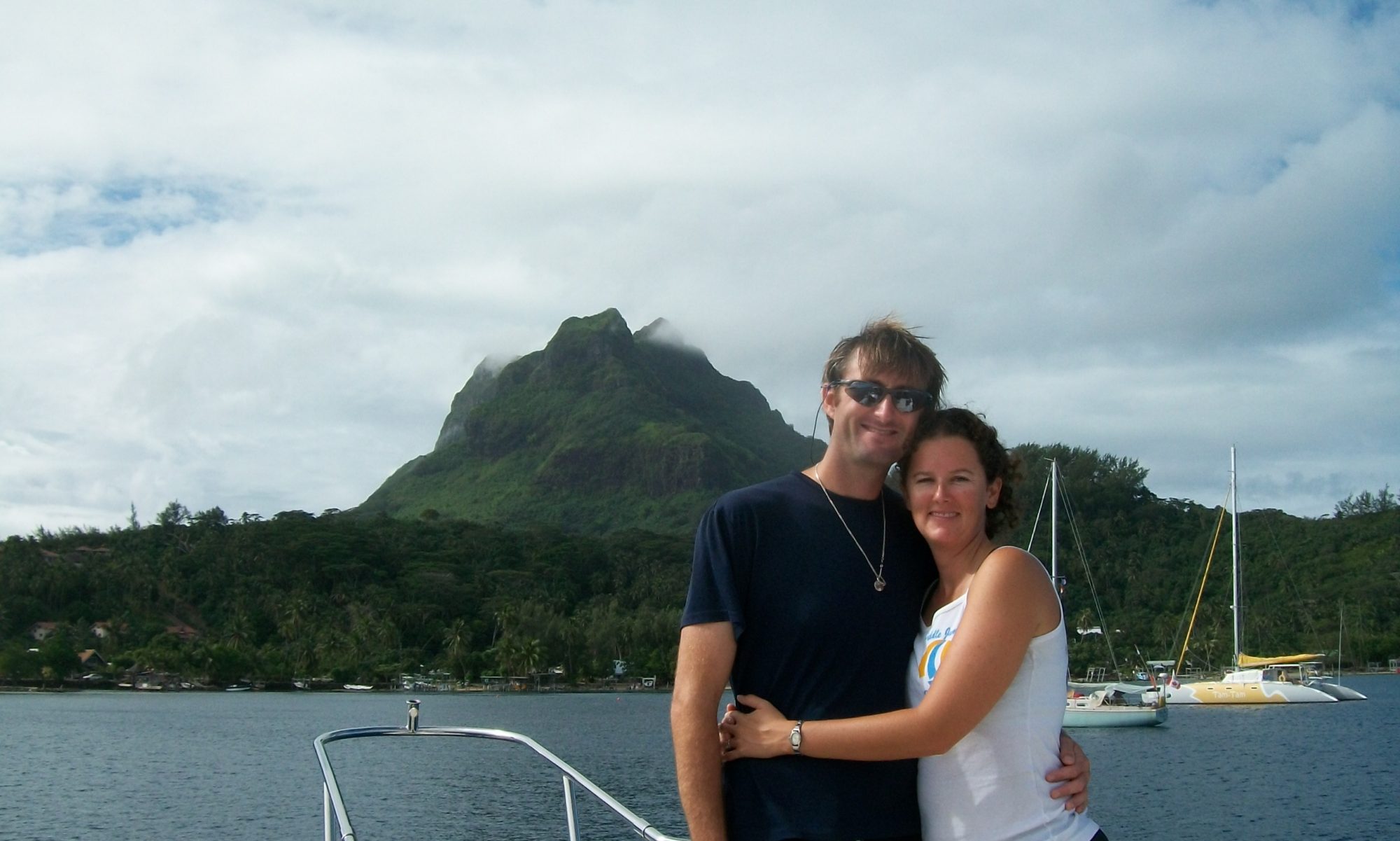Kauehi, Tuamotu, French Polynesia
So that’s the city sign. Guess they don’t exactly have a city line, being as there aren’t a lot of other cities out here to butt up against.
So the semi-obvious question I left out of the previous entries (I ran out of space!) was, “Greg, I get how the islands got there, how did the PEOPLE get there?!?”
Good question, and the short answer is…no one actually knows for sure.
Some people say they sailed from South America. Some dude name Thor (no, really, it’s his name) sailed a raft from South America to prove this theory. He made it to the Marquesas, so, it possible. However, the current popular theory is that the ancient Polynesians came from Asian stock:
(thanks to httpthe.honoluluadvertiser.com)
The summary version is that the Polynesian people were beyond comprehension badasses at seagoing navigation. They were human sextants capable of determining their exact position on the largest expanse of bleak nothingness on the planet Earth (the Pacific Ocean) by doing things such as watching the stars, checking the angle of the waves, looking at birds in flight and…no that’s it. That’s what they did. I am not a Polynesian. I use a GPS because I suck with a sextant, much less reading the angle of a wave bounced off an island 100 miles away (not making this up or exaggerating here.) So these people sailed against the current and upwind in what amounted to two canoes tied together by some wood and some sails lashed on top. Why did they sail against the wind and current? So that if, while exploring, they failed to find any land, they could easily get pushed back home once all the food and water was used up onboard. Doesn’t that just sound swell? Well it sure did to them because they got really, really good at it. Therein how they found, charted and settled all these islands long before we Europeans with our clunky tall ships (and syphilis! Let’s not forget what we brought to share!) showed up on the scene.
As for Kauehi city, well, city is a generous term. Here’s me in the center of town, which also doubles for their beach:
They have a “store” (it may one day grow up to be a 7-11) where they sold baguettes!
Our elation at being able to resupply our junkie fix for awesome fresh French bread was short lived when we found out that the baguettes were frozen. It did lead us to wonder though: are they frozen because they got shipped here? Or do they just turn on the bread baking over once a month to save energy? Unfortunately my limited French skills did not cover such complex topics of conversation. I did manage to find ice cream though. Hey, if they can freeze bread they can have ice cream. More importantly, I can have ice cream.
The main structure of the town is the church. We were lucky enough to be here on a Sunday and we attended a Catholic mass in Tahitian. Though we couldn’t understand the service, we did get to meet the entire town (maybe 100 people in total) and they were really nice to us. Also, the percussion instrument in the choir was an Alhambra water jug. I felt that it would be disrespectful to tape this guy playing during mass but man, WOW. You’d be amazed how good people can get at playing an empty plastic water jug when it’s the only instrument available for 600 or so miles.
They have a dinghy dock and yacht anchorage. The monthly resupply ship, their only semi-reliable (weather depending) means of contact with the outside world, stays offshore and sends in small tender vessels with supplies for the residents. No exports that I am aware of or could find evidence of are taken back out to the ship. With only 100 people on the island and about 30 yachts a year that visit, they have an almost untouched natural beauty and crystal clear blue water right up the edge of the dock.
These people LIVE here. Perched on this tiny ring of coral in the middle of the ocean. They fish, collect rain water to drink and they have been doing it for hundreds of years.
-Greg









4 Replies to “Seriously, you live here?”
Comments are closed.